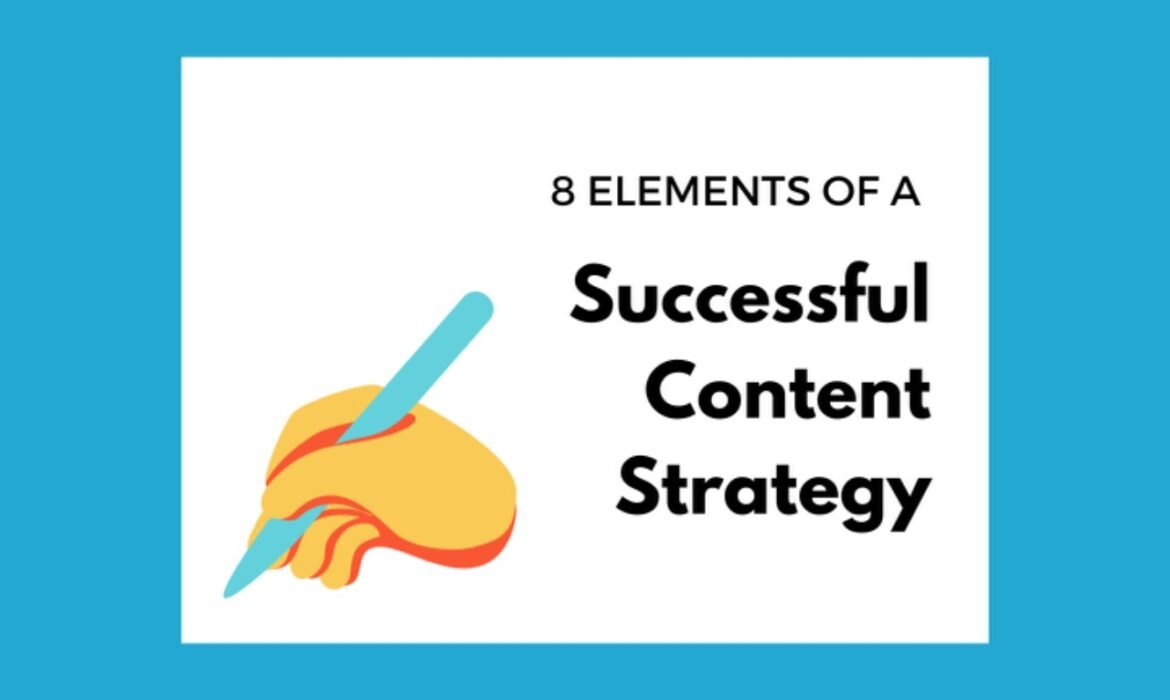
A good content strategy will help you establish your goals, determine priorities, and maximize efficiency. Here’s what you need to know to create one.
A content strategy is a specific set of tactics used in the development and management of content. It uses various forms of media, including blogs, videos, podcasts, and/or social media posts to achieve specific business ends.
Let’s run through them in the order you should create them.
- Goals- A thriving content marketing set up perpetually begins with clearly declared goals. This is often a step many skip, to their own impairment. A number of the additional common goals are building a whole awareness, increasing traffic, growing an email list, generating new leads, converting new customers, improving client retention, and upselling. The goal you choose determines the sort of content and channel for every marketing tactic.
- Research- each tactic in your content strategy ought to be backed by analysis to justify it. Begin by seeing your target market. What are their demographics? What are their pain points? How are you able to help? There are a variety of ways to search out this data, as well as mining digital information, causing surveys, and interviewing customers. Next, apply this information to your current content and establish wherever it hits the mark, wherever it can be stronger, and wherever it loses fully. Do keyword analysis, and establish those phrases you’re ranking majorly for and which require work. make sure to notice search intent, volume, and relevance.
- Targeted Topics- Establish that topics are most significant to every part of your strategy and the way your new content can facilitate success to your goal. To gauge a subject, confirm how it’ll work together with your structure goals. This may provide them familiarity with your whole idea.
- Editorial Calendar- Some things have a clearly defined season. work out the most effective time to drop every bit of content, in addition as a cadence to how often you’ll provide a new content. This may vary according to your audience and platform, thus there aren’t any arduous and quick rules. This provides you additional flexibility just in case an emergency pops up, in addition to minimizing the strain of content creation.
- Editorial Guidelines- Work out the voice of your organization. Write down a document explaining it, and distribute it among your content creators, whether or not they’re in-house or freelancers. This may produce a way of consistency across all forms of content and every channel. On this same document, you can define info needs, as well as punctuation, heading designs, and elegance (e.g., AP style).
- Distribution Channels- You’ve got your content goals, topics and calendar figured out; now, it’s time to make your mind up where you’ll use it. Establish the platforms you’ll use to inform your content and your processes and objectives for every one. Wherever the content will live will have an impact on its format and cadence. However your goal is to give a whole narrative across all channels. By outlining your distribution channels, you’re distinguishing the most effective platform for every piece of content.
- Analytics– Now, it’s time to gauge it and see what’s working, and at the same time, what’s not. It’s time to dive into the analytics. You’re not simply gazing the numbers of shares, clicks, or purchases through your website; you’re trying to find the “why?” You’re attempting to know what created content succeeds as others are failing. Did it work well on one channel, however fail on another? Why did that happen? Is it a special audience or simply a scarcity of exposure? Google Analytics is often very useful throughout this step.
- Key Performance Indicators- This goes hand-in-hand with the previous step; whereas analyzing content performance, you must realize key performance indicators (KPIs) to back it up. Some KPIs you may contemplate are organic net traffic, sales opportunities generated, keyword ranking changes, social shares and engagement, incoming links, and cost-per-lead.
Creating this strategy requires some work, but even the simplest organizations, with the smallest marketing budgets, will benefit from using one. And it’s an absolute must for marketing departments with any type of complexity.


![Turning Clicks into Conversions!We’re proud to showcase our latest success story — Furnipark.com, a complete e-commerce transformation project crafted to elevate the online furniture shopping experience.From strategy and UX design to Shopify integration and automation, our goal was simple — build a high-performing website that drives real business growth.💡 Clean UI. Fast performance. Seamless checkout.
That’s how we help brands like Furnipark scale smarter online.📩 Looking to build or revamp your e-commerce website?
Let’s create a digital experience your customers will love.👉 Reach out at sales@aimglobal.digital
or visit www.aimglobal.digital[e-commerce website development, Shopify website, digital transformation, UI/UX design, conversion optimization, website redesign, performance marketing, online furniture store, web development agency, Aim Global Digital]](https://aimglobal.digital/wp-content/plugins/instagram-feed/img/placeholder.png)




